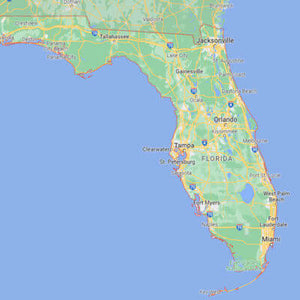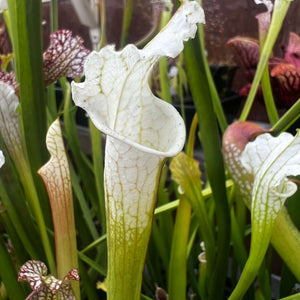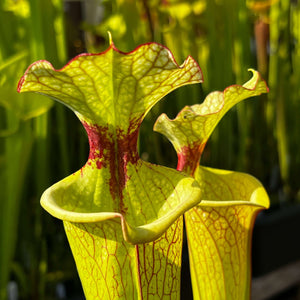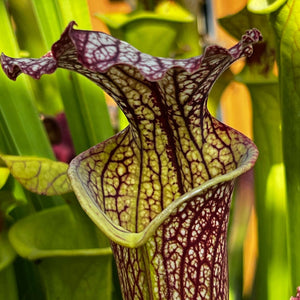Description of Iris ensata 'Greywoods Catrina'
Iris ensata 'Greywoods Catrina' is a Japanese Iris. It is a perennial plant that loves water. This iris fits well in damp spots, by a pond, or in a rain garden. It brings a strong visual element to these areas.
Plant Size and Appearance
This iris grows 90 to 120 centimetres tall. It spreads 45 to 60 centimetres wide. The leaves are narrow and shaped like swords. They are a fresh green colour. The leaves grow in a tight clump. This adds a vertical line and texture to your garden border.
The Summer Flowers
Flowers appear from June to July. Each bloom is large, often 15 to 20 centimetres across. The colour is a deep, rich purple. At the flower's heart, you find a small, golden-yellow mark. This mark is called a signal. The petals have a gentle, ruffled edge. This shape gives the flower a soft look.
Where to Plant Your Iris
Iris ensata 'Greywoods Catrina' needs specific conditions to grow well.
It likes a spot in full sun or partial shade. The soil must be moist. It prefers soil that is slightly acidic to neutral. This plant is perfect for ground that is always wet. You can plant it at the edge of a pond. It can even grow in shallow water up to 10 centimetres deep.
Do not plant it in dry soil. Avoid soil that is very chalky or alkaline. These conditions can weaken the plant and stop it from flowering.
How to Care for Your Iris
This iris is a hardy plant. It tolerates frost and will come back each year in the UK.
Mix organic matter into the soil before planting. Use compost or well-rotted manure. This helps the soil hold water and feeds the plant. You must keep the soil moist, especially in spring and summer. A layer of mulch each year will conserve moisture and keep weeds down.
In late autumn, cut the old leaves back to the ground. This tidies the plant for winter. Feed the plant in early spring. Use a balanced fertiliser that is not too high in nitrogen.
Dividing and Propagating
Every three to four years, the plant clump can get too crowded. The best time to divide it is in late summer or early autumn, after it has flowered.
Dig up the clump. Split it into smaller sections. Replant these divisions straight away into moist soil. This process keeps the plant healthy. You can also grow this iris from seed, but division is much faster and more reliable.
Using Iris ensata 'Greywoods Catrina' in Your Garden
This iris has several garden uses. Its tall, colourful flowers make a great focal point by a water feature. It works well in a bog garden or a damp meadow area. The flowers are also good for cutting. They last a long time in a vase indoors.
The plant also helps wildlife. Bees and butterflies visit the flowers for nectar. The dense leaves help to hold soil in place on wet banks, which stops erosion.
For the best results, remember its key needs: plenty of moisture, sun, and division every few years.

 UK-grown carnivorous plants
UK-grown carnivorous plants






